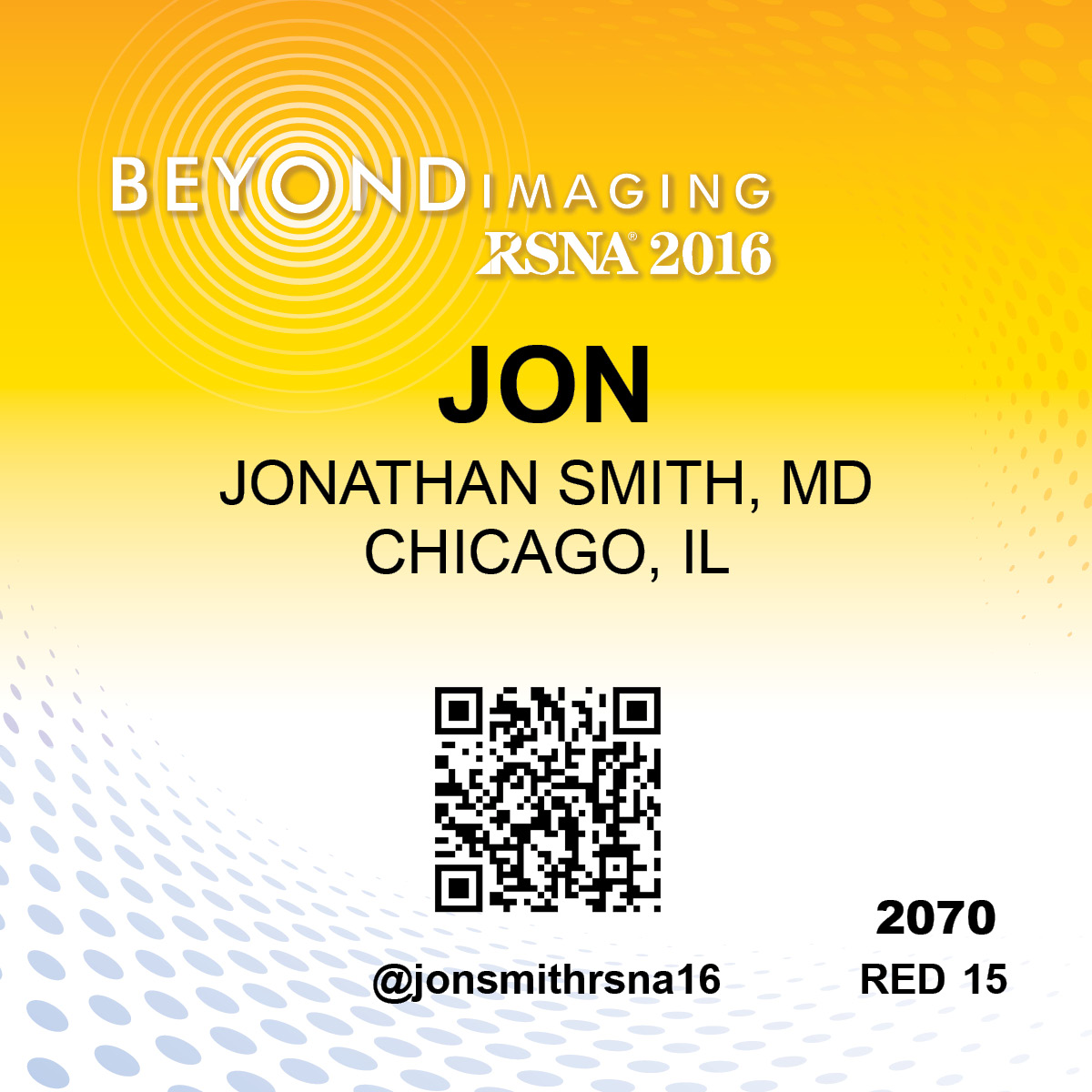Login
Login Issue:
There was an issue with the username or password you provided.
There was an issue with the username or password you provided.

|

|
By clicking yes, you will reserve a ticket for:
By clicking no, you will keep your ticket for:
Approximately 55 courses at RSNA 2016 require e-tickets for entry. By adding an e-ticketed course to your Agenda, you are reserving an e-ticket for that course.
Your Agenda allows you to add multiple items to your calendar so you can keep track of the things that interest you. However, you can only reserve an e-ticket for one course during a given time slot. When you select an e-ticketed course that conflicts with another e-ticketed course in your Agenda, you have the option to either switch your selection or keep the e-ticket for your original selection.
By visiting your Agenda, you can view a list of your e-ticketed courses and modify your selections by adding or deleting courses from your Agenda.
You will not receive printed tickets for any of your courses. Rather, your meeting badge will be scanned at the door for admittance.
Contact myagenda@rsna.org for more information or assistance.
Your meeting attendance has not been verified
To enable access to evaluate courses, claim your credits and access your certificate of attendance, verify your meeting attendance by:



Driving Value Through Imaging

2016 Honorary Members

Imaging Plays Key Role in Race to Combat the Zika Virus

Electronic Tools Connect Radiologists with Patients

Preparedness is Key for Radiologists in Event of Radiological or Nuclear Terrorism Incident

Protocols Focused on Detection of Injury, Adaptation in Young Athletes

Deep Learning May Play a Role in Assessing Breast Texture

Dual-Contrast Photon-Counting CT Improves Diagnosis of Liver Lesions

Combined Modalities May Improve Diagnosis, Treatment of Crohn's Disease

Image-guided Cryoablation May Offer Alternative to Surgery for Kidney Cancer

CT Models Predict COPD and Smoking-Related Morbidity in Cigarette Smokers

CT-guided Botox Injections Show Promise in Easing Pelvic Pain

The New Healthcare Team: Exhibitors Offer Solutions for Physician Collaboration: HealthMyne Partners with Radiologists to Improve Patient Care
Tuesday At a Glance
New Horizons Lecture Presented Today
RSNA 2016 Gold Medalists
Margulis Award Presented Today
Monday's Press Releases
RSNA Spotlights Residents and Fellows
More to See at RSNA 2016: Sessions in Every Subspecialty
AODR Presentation Dedicated to Singleton
Special Recognition for In-Kind Support
RSNA Research & Education (R&E) Foundation Celebrates #GivingTuesday
New Hands-on Prostate MRI Course is a Hit
Tuesday in the Discovery Theater
Full-Day Liver Symposium on Friday, Dec. 2
RSNA Asks: How Do Residents/Fellows Use Social Media?
Residents Mix and Mingle at RSNA/ACR Reception
Question of the Day:
I want to buy a new mammography unit, but it has a tungsten target. Don't I need the characteristic x-rays from Molybdenum to have the optimal energy range for breast imaging?
Tip of the day:
Dose alerts are set for equipment as a complete unit. This means it may help prevent overdosing a patient, but it also means that the alert may kick in during a high-dose procedure like CT-fluoroscopy and interrupt imaging. Always make sure someone in the room has the password to override when performing high dose procedures on dose alert enabled equipment.
PDF(s):
© 2016 RSNA.
The RSNA 2016 Daily Bulletin is the official publication of the 101st Scientific Assembly and Annual Meeting of the Radiological Society of North America. Published Sunday, November 29 — Thursday, December 3.
Daily Bulletin Editorial Board and staff
The RSNA 2016 Daily Bulletin is owned and published by the Radiological Society of North America, Inc., 820 Jorie Blvd., Oak Brook, IL 60523.
Editorial Board
Managing Editor
Executive Editor
Executive Director
Assistant Executive Director: Marketing and International Affairs
Director: Public Information and Communications
Director: Corporate Relations
Production Manager
Production Assistants
Daily Bulletin Online
Question:
I want to buy a new mammography unit, but it has a tungsten target. Don't I need the characteristic x-rays from Molybdenum to have the optimal energy range for breast imaging?
Answer:
Before digital detectors, that was the case. Digital systems have greater exposure latitude and post-processing techniques that make the characteristic radiation (from Mo or Rh) less important than it was for screen-film systems.
